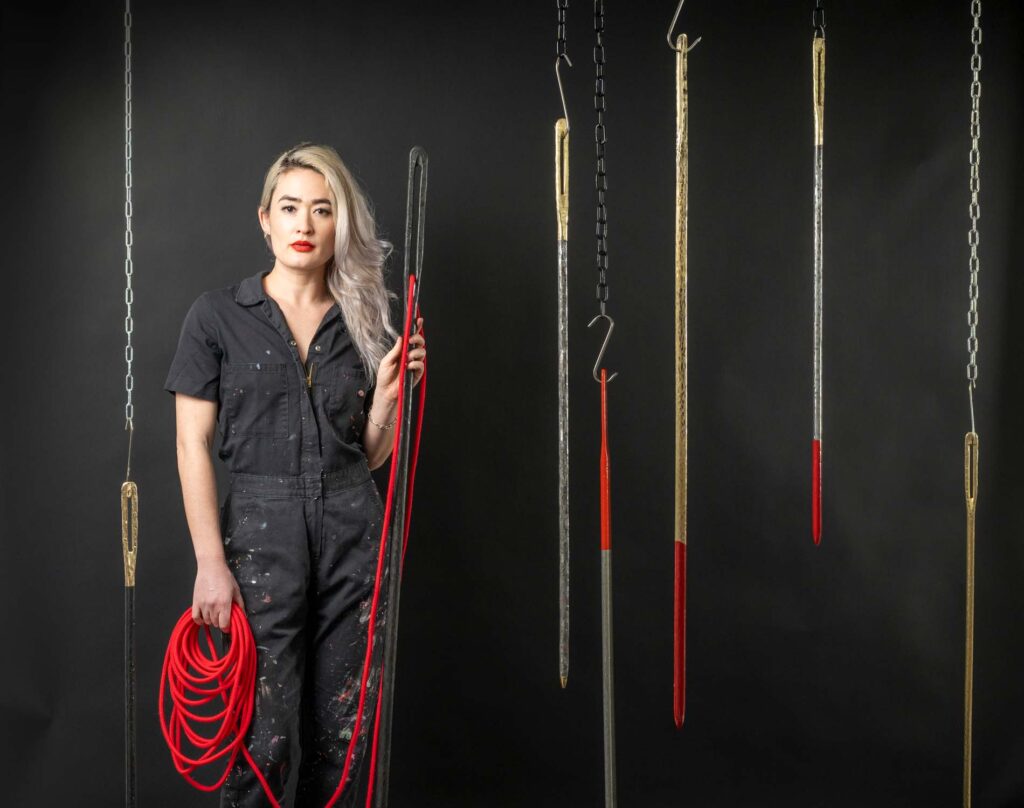
Makiko Harris
Interview by Laasaya Gadiyaram
In her multidisciplinary practice, Makiko Harris navigates the intersections of identity, spectatorship, and the politics of the body, using mediums as varied as painting, sculpture, film, and installation. With a background rooted in textile arts and a global exhibition history spanning from Japan to the UK, Makiko Harris brings a nuanced sensitivity to material, context, and form. Her art invites viewers to question the surfaces they see—and the power structures beneath them—through layered imagery, digital fragmentation, and a tactile exploration of the body in all its complexity. Whether through slick steel or skin-toned abstraction, Makiko Harris’s work compels us to confront how we see, touch, and interpret the world—and ourselves.
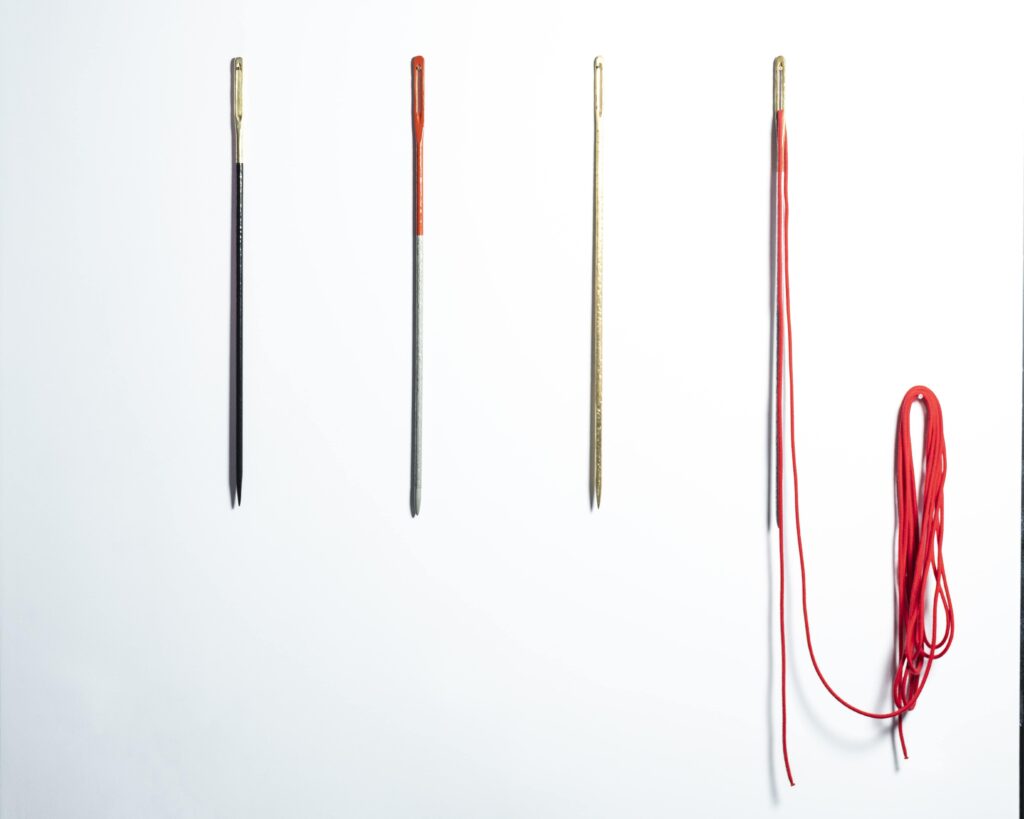
LG: Your work spans theme, genre, and medium, addressing vast expanses of culturally salient topics. Despite this diversity, what is a throughline, if any, that unites your range of work?
MH: At its core, my practice is an exploration of identity, spectatorship, and the politics of the body, particularly the racialized and gendered body. Whether I’m working in painting, sculpture, installation, or film, there’s a continuous thread of investigating how we see, touch, consume, and are consumed. I’m interested in the tension between surface and depth, artifice and intimacy.
Circular Knitting Needle 2, 2025
Lacquered aluminium, cotton rope, nylon rope, chain, Japanese knitting
wool, acrylic paint, ceramic, spray paint, elastic, vinyl, keychains, safety
pin, leather
72 x 2 in
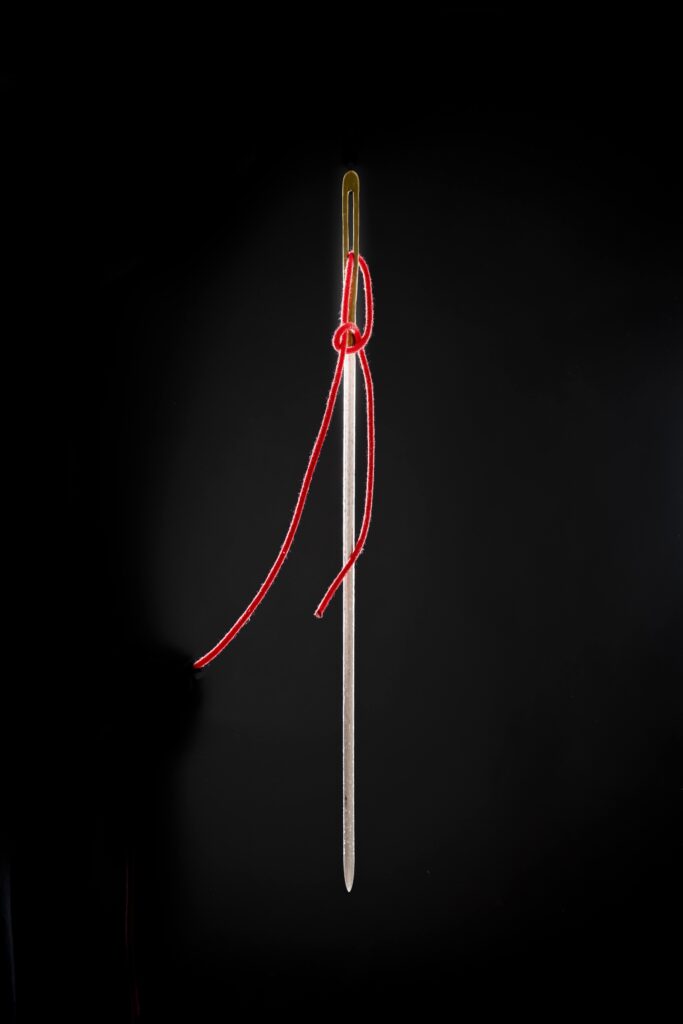
Sewing Needle 4, 2025
Powder coated aluminium, cotton rope
40 x 1 in
LG: Walk us through your artistic process. Where does your inspiration come from? And how do you translate that into art?
MH: My process often begins with a visceral response—sometimes to a piece of theory, sometimes to a material, a memory, or a bodily sensation. I draw heavily from feminist texts, personal photography, and digital aesthetics. I use digital tools to fragment and distort images of my own body, which I then retranslate into physical form through painting, powder-coated steel, or installation. It’s a kind of layering: of concept, image, and medium that mirrors the complexity of identity and perception.
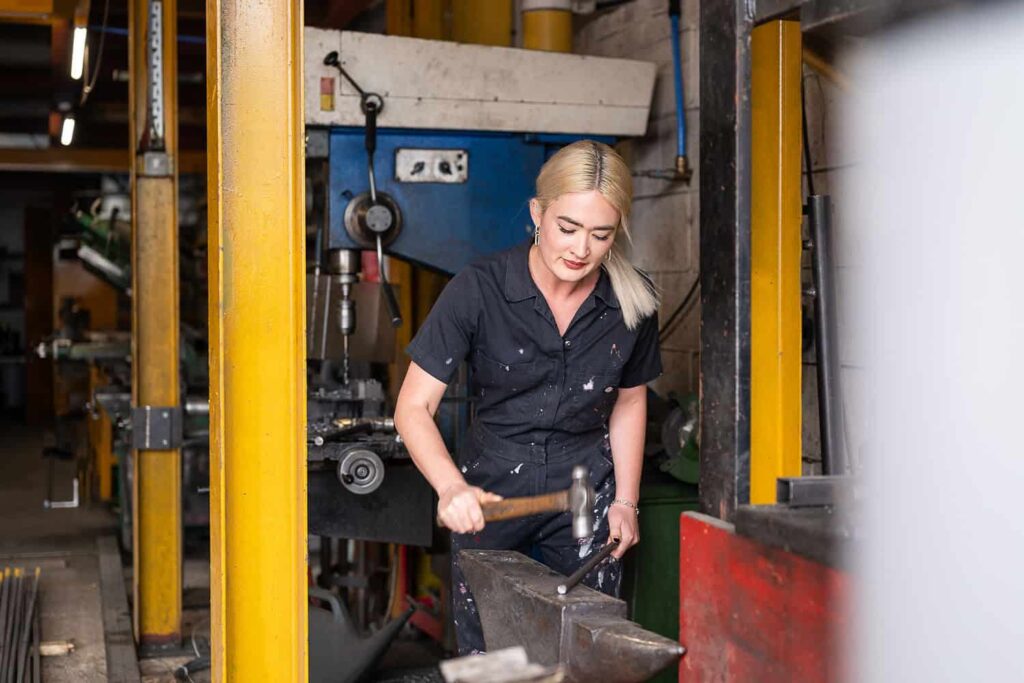
LG: Your 2023 film which premiered at the Tate Modern addressed feminist poetics. How have you seen this theme evolve over the two years since you created this work?
MH: Feminist poetics has always been about nuance, resisting binaries and creating space for the in-between. Since 2023, I’ve become more interested in the slippery nature of subjectivity: how it morphs in digital spaces, how desire is shaped by screens, how softness can be a strategy. My newer work leans further into abstraction, still rooted in feminist thought, but now with an emphasis on intimacy, fragmentation, and disembodiment.
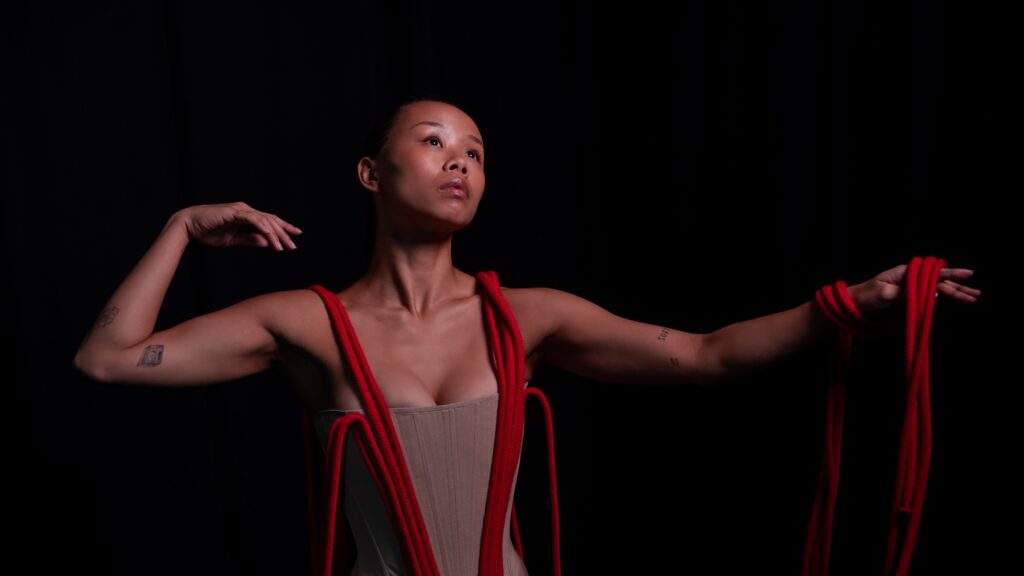
Still from Needle Dance, 2025
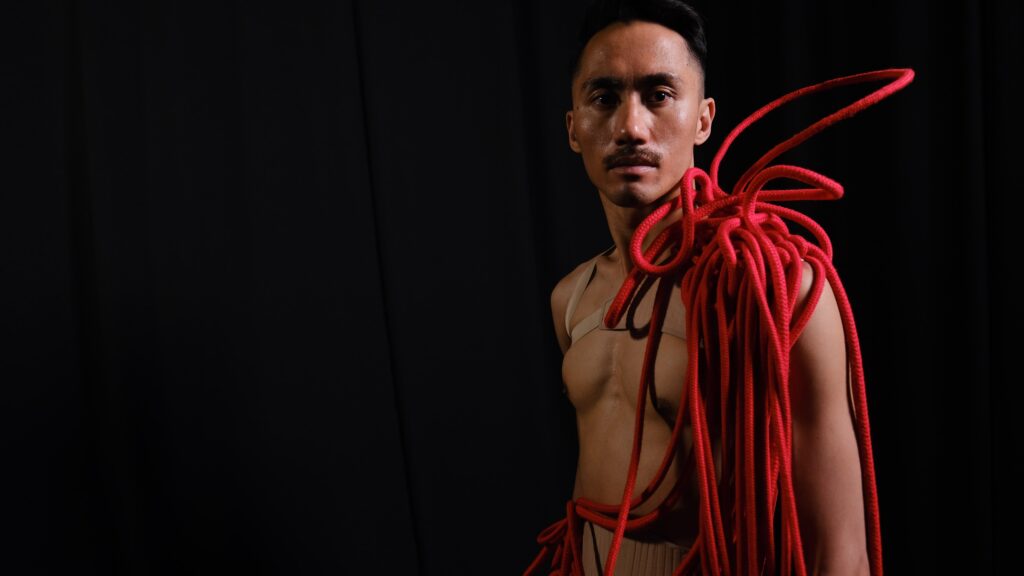
Still from Needle Dance, 2025
LG: Identity can be a fickle theme to pin down. How do you go about materializing it through your art?
MH: I think of identity not as fixed but as performative and porous. I often use fragments of body, object, or narrative to gesture at identity rather than define it. Oversized fingernails, slick steel surfaces, intimate skin tones—they’re all stand-ins for different facets of identity: constructed, exaggerated, fetishized, or concealed. Through abstraction and material play, I aim to open up identity rather than contain it.

LG: Your work has been shown all across the world, from Great Britain, Portugal, Japan, Austria, and more. How has the global nature of your work influenced your artistic approach?
MH: Showing work internationally has deepened my sensitivity to context. Cultural perceptions of the body, femininity, and surface vary widely. I’ve learned to lean into ambiguity and multiplicity, allowing viewers to bring their own frameworks to the work. At the same time, being between cultures myself—Japanese and American—means that dislocation and translation are always embedded in my practice.
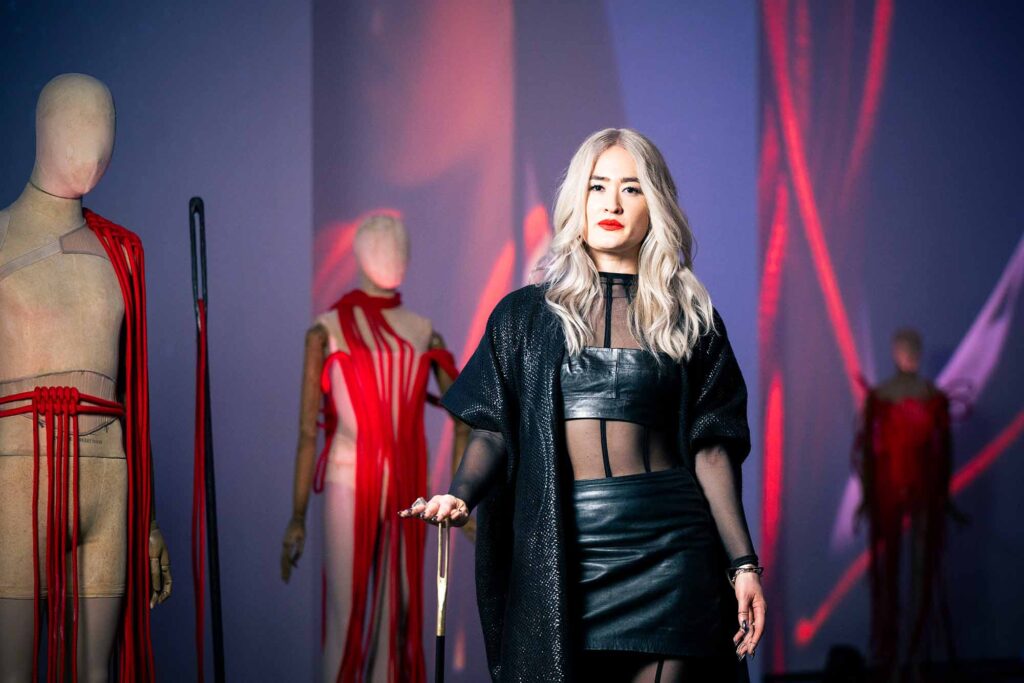
LG: What is it like to work with such a diverse range of mediums? Does the form your art takes influence your approach to it?
MH: Absolutely. Each medium has its own language, limitations, and possibilities. Painting allows for intimacy and gesture. Steel brings structure and distance. Sound and film open up time-based and immersive experiences. I choose the medium based on what the work needs to say. Sometimes that choice is intuitive, and sometimes it’s conceptual. But I always consider how the material interacts with the body, both mine and the viewer’s.


LG: Much of your work stems from the intersectionality of your identity. How has that informed your artistic process?
MH: Intersectionality gives me a lens through which to understand how power operates and how bodies are read, regulated, and rendered visible or invisible. As a biracial woman, I often feel hypervisible and illegible at the same time. That tension fuels my work. I use beauty and artifice as traps, ways to seduce the viewer into lingering longer, into questioning what they’re really seeing.

LG: Textile arts largely shaped your initial introduction to creation. How has your contemporary work reflected your artistic origins?
MH: Textiles taught me the value of process, repetition, and care. Even when I’m not working directly with fabric, those principles are still there in how I layer surfaces and build up and strip down. I think my attention to skin, surface, and touch comes from that early training in softness and structure. There’s a tenderness to textile work that still informs my aesthetic sensibility.
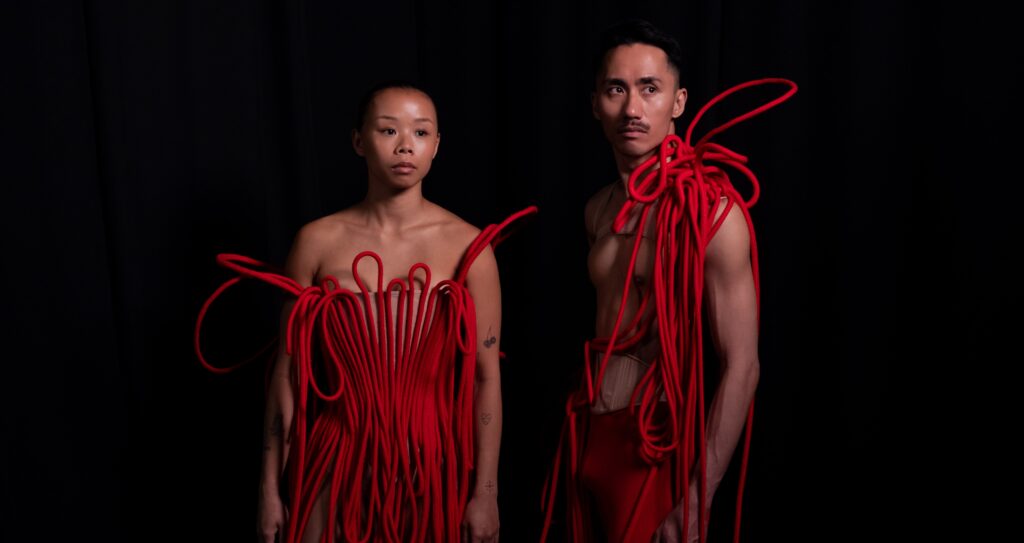
Still from Needle Dance, 2025
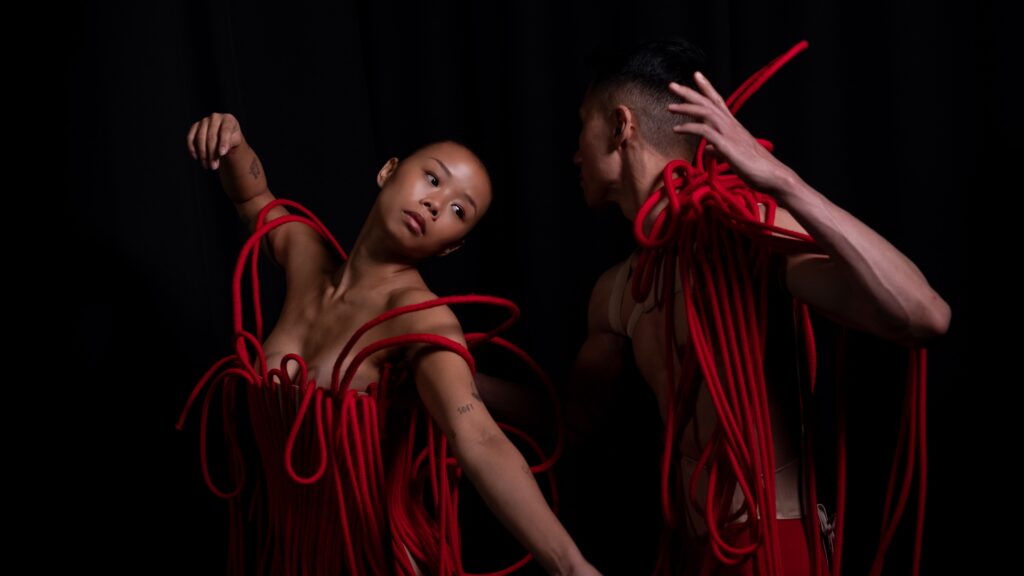
Still from Needle Dance, 2025
LG: In your art, you emphasize certain elements of femininity, like fingernails. How do you choose what elements to exaggerate?
MH: I’m drawn to things that are both ornamental and loaded, objects that signal femininity, labor, or desire. Fingernails, for example, are hyper-feminine, sexualized, sometimes monstrous. They’re also shields, tools, and decorations. I exaggerate elements that carry both allure and unease, things that can’t be easily resolved.
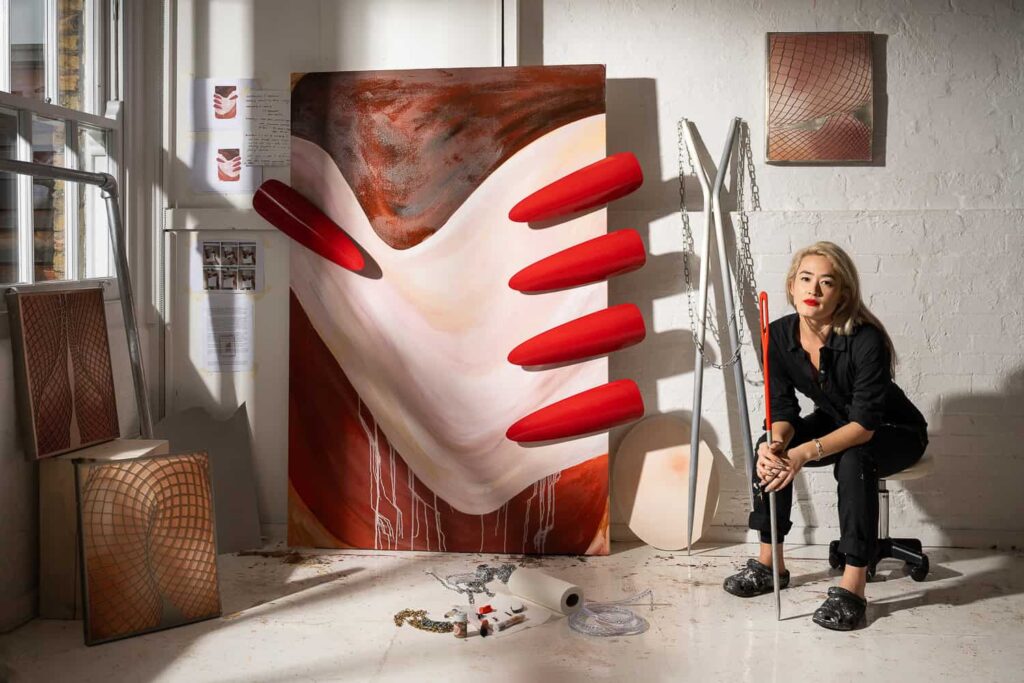
Squeeze II, 2024
Oil and acrylic canvas, powder coated aluminium
72 x 48 in
LG: What do you want viewers to know about your work before they experience it?
MH: I’d like viewers to approach the work with openness and curiosity rather than expectation. Much of what I do resists easy interpretation. I’m not offering answers. I’m creating space for feeling, reflection, and maybe discomfort. If you walk away with more questions than you arrived with, I’ve done my job.
Still from Needle Dance, 2025